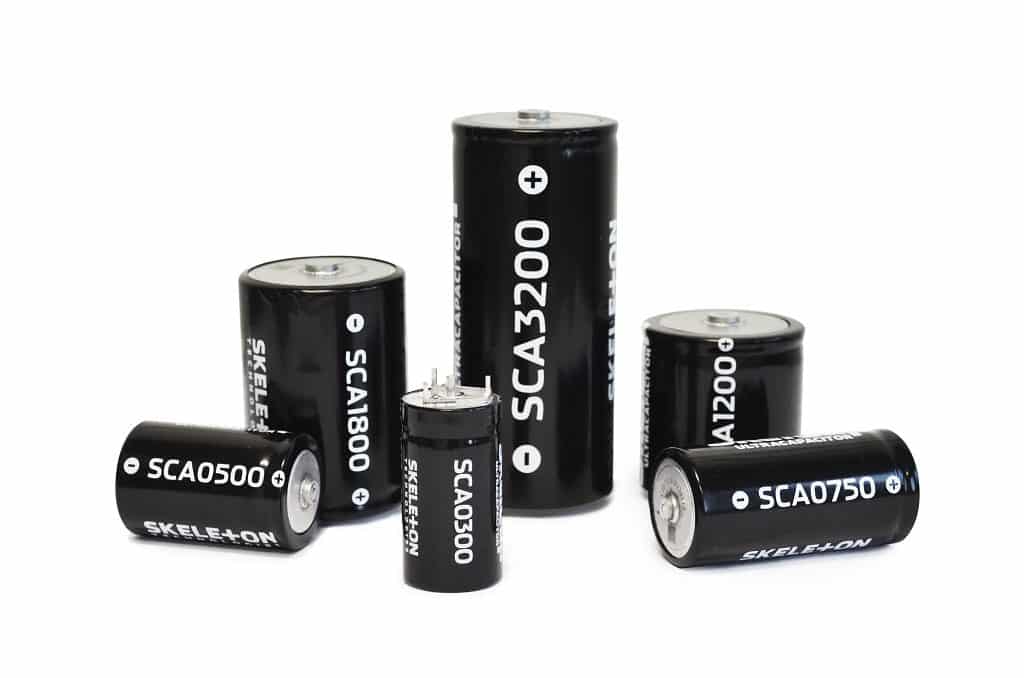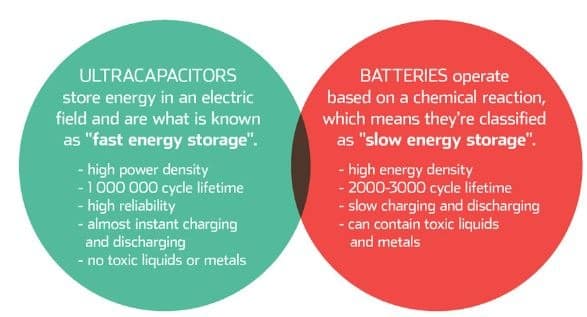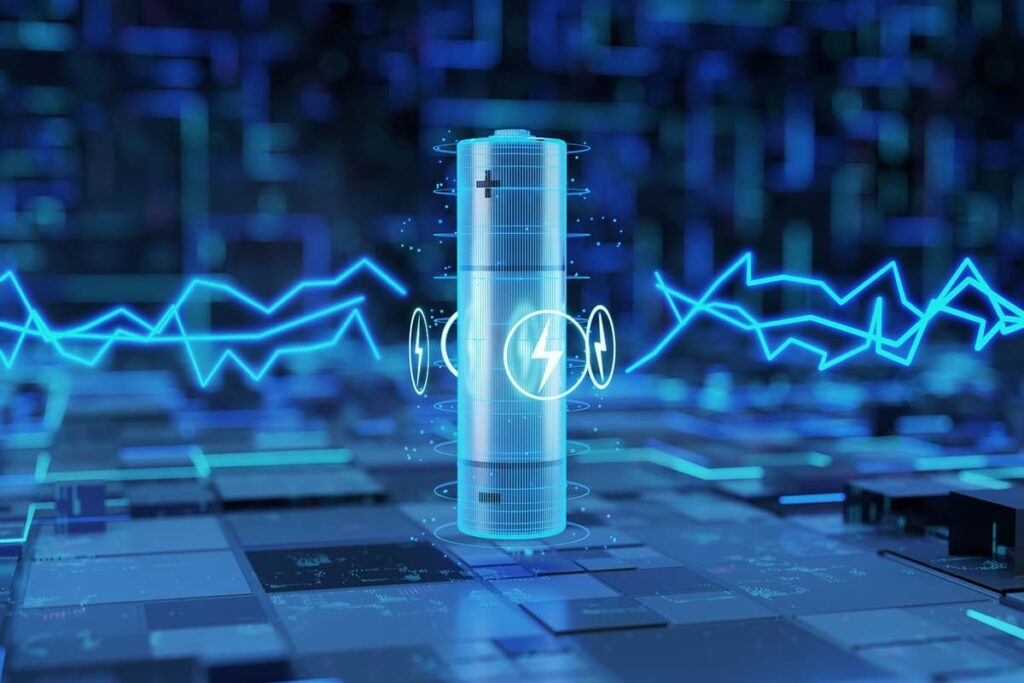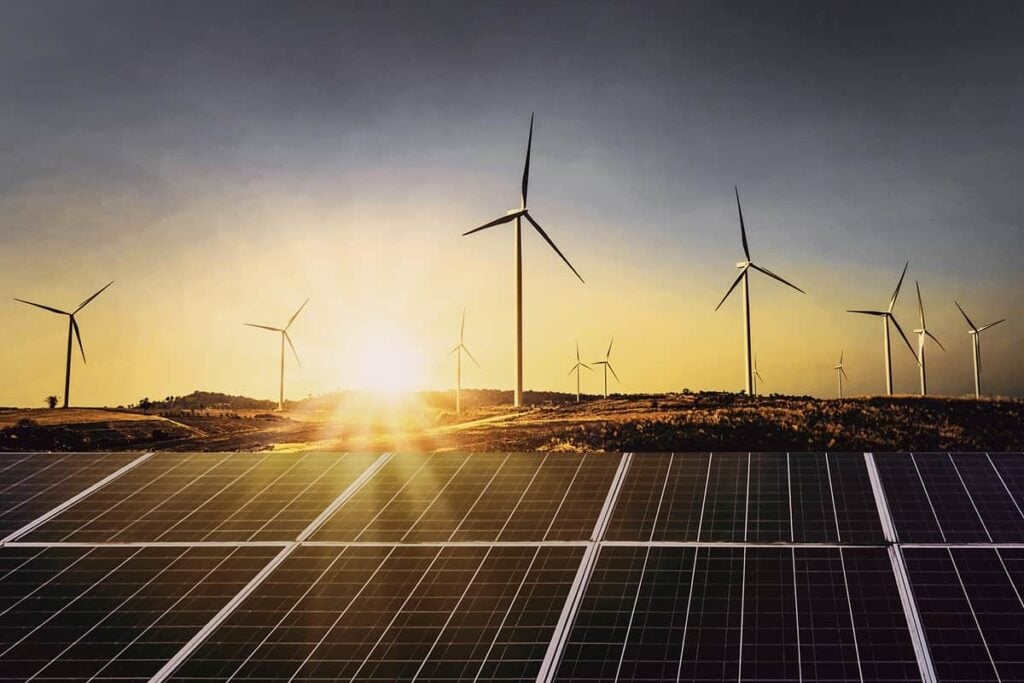Skeleton Technologies and the Future of Ultracapacitors
Table of contents

People cannot help but be attracted to cult stocks where the story becomes more important than the basic principles of investing. Charismatic leaders seem to be a necessary ingredient for cult stocks lately, as both Richard Branson’s Virgin Galactic (SPCE) and Elon Musk’s Tesla (TSLA) reached new highs last month as millennial investors piled in. When stocks demonstrate such high levels of volatility and media attention, investors are whipped into an emotional frenzy, and bad decisions are made. It’s nearly impossible to overcome the fear and greed that comes with being a Tesla investor, so perhaps it’s better to sit on the sidelines and observe the action without a dog in the race. If you’ve been watching the Tesla story, you would have seen that last year they acquired a large manufacturer of ultracapacitors – Maxwell Technologies.
Supercapacitors and Tesla
Supercapacitors – or what we shall henceforth refer to as ultracapacitors because it sounds cooler – store energy just like batteries do. That’s about where the similarities end. In a previous article titled “Supercapacitors – A Brief Overview for Investors,” we wrote about how an ultracapacitor can charge extremely quickly, but discharges just as fast. Batteries on the other hand, are slow to charge and slow to discharge. This means that batteries and ultracapacitors have been traditionally used for very different use cases with minimal overlap:

Some pundits say that when ultracapacitor technology finally matures, we will have electric vehicles that charge faster than it takes to fill up your car with gas. Given that mad genius Musk now has his paws all over Maxwell’s ultracapacitors, everyone is speculating about what’s coming next. It’s especially interesting when you consider that Mr. Musk originally ended up in Silicon Valley because he planned “to do a Ph.D. at Stanford in the physics and materials science of high-energy density capacitors, specifically for electric vehicle applications,” something commented on in a Tesla blog post and in the below tweet.

Broad speculation surrounds Tesla’s acquisition, with some people thinking that they plan to use ultracapacitors to decrease battery charging speed and/or increase battery density for the vehicles, the latter of which would increase range, all things considered. Last month, an article by Electrek claimed to have “uncovered comments from Maxwell executives about how Tesla was mainly interested in the company’s battery technology.” Just a day before, a podcast was published on YouTube with Musk saying capacitors aren’t the way forward for electric vehicles (watch this for about 15 seconds, or until you start feeling drowsy). More recently, Mr. Musk provided some color in Tesla’s latest earnings call telling everyone to wait until Battery Day, an event that’s expected to be held in April of this year:

Since Tesla gobbled up one of the main players in the ultracapacitor space, we wanted to find another industry leader in ultracapacitors and pick their brains. And for that, we sent one of our MBAs over to the beautiful capital of Estonia, Tallinn to sample Estonia’s famous craft brews and chat with a global leader in ultracapacitor technology – Estonia’s own Skeleton Technologies.
About Skeleton Technologies
Founded in 2009, Estonia’s Skeleton Technologies has taken in around $66 million in funding to become a global leader in ultracapacitor technology, thanks to graphene. (This may be the first instance we’ve come across where graphene has finally been put to good use at scale.) Skeleton uses a proprietary material they refer to as “curved graphene” which is the basis for the competitive advantage their ultracapacitor cells possess – primarily on price and power density.
Update 03/12/2021: Skeleton Technologies has raised $61 million in fresh funding to scale up its ultracapacitor business. This brings the company’s total funding to $165.7 million to date.
Located near the Tallinn airport, the company headquarters sits among a small cluster of Estonian tech companies where around 60 employees work to coordinate the design, production, and sale of ultracapacitors that rival anything the competition can put out, including Tesla’s Maxwell. If Mr. Musk was only interested in purchasing the most advanced ultracapacitors out there, looks like he bought the wrong company:

Skeleton saw their most successful year ever in 2019 with $164 million (150 million euros) worth of contracts for their ultracapacitors which are produced in Germany by a team of around 80 employees. Ultracapacitors are relatively simple devices – just aluminum, carbon, paper, and an electrolyte.

However, it’s difficult to make consistently high-quality products, which is why Skeleton turned to zee Germans and their legendary manufacturing capabilities. A region of Germany often referred to as “Silicon Saxony” has a large availability of skilled workers and existing infrastructure leftover from photovoltaics production which has since migrated to China. Skeleton’s German factory is presently doubling capacity with plans to hit 1,000,000 ultracapacitors per year in 2020. Further automation will enable them to scale up production capacity to 4,000,000 cells in the first phase, and ultimately to 10,000,000 ultracapacitors to meet demand from automotive, grid, and transportation.
Ultracapacitor Use Cases
We sat down to talk with the Head of Communications at Skeleton Technologies, Arnaud Castaignet, who said the company is just as puzzled as everyone else as to what Tesla was thinking when they acquired Maxwell. What they do know is that the acquisition has raised awareness of how ultracapacitors can be used in a broad number of use cases to create efficiencies. There are four segments that the company operates in.
- Automotive – Perhaps the newest segment the company operates in. They’re collaborating with leading automotive companies to develop ultracapacitors to replace lead-acid batteries in the future and for regenerative power when vehicles brake.
- Grid – Lead-acid batteries are used heavily throughout the power grid and present many potential use cases for ultracapacitors.
- Industrial – There are many industrial use cases where kinetic energy can be harvested using the Kinetic Energy Recovery System (KERS) powered by Skeleton Technologies’ graphene ultracapacitors. Spanish company Epic Power uses it to reduce the power consumption of elevators by up to 50%. In the biggest container port in the Baltic region, ultracapacitors are being used to reduce fuel consumption and CO2 emissions by 34% for port cranes. The medical industry has many power-related applications such as shaving peaks of power and ensuring sufficient power quality for MRI machines. Skeleton has worked with the global leader in medical equipment manufacturing to develop their Skelmod 131v.
- Transportation – The high efficiency of ultracapacitor energy storage is well-suited trains, trams, trucks, and buses, enabling both energy savings as well as protection for the infrastructure from high peaks of power. For example, Skeleton supplies ultracapacitor systems to ŠKODA Electric for 114 electric trams in Germany. Just last month, they announced a contract to do the same in Poland.
Their ultracapacitors come in different shapes and sizes for each application. From standard-sized industrial capacitor cells to customized modules to fit niche use cases, the company is able to manufacture ultracapacitors in a variety of useful form factors.

The Future of Ultracapacitors
There are a number of applications for ultracapacitors that can address huge markets, like the transportation industry. Take lead-acid batteries for example. There’s a company that’s built an entire business around recycling these things. It’s not a stretch to think that the lead-acid car battery could be replaced by an ultracapacitor. Even today’s electric cars still use lead-acid batteries, so the use case applies to cars of all types. For electric cars, the lithium-ion battery packs are one of the most important components. Combining an ultracapacitor with a lithium-ion battery pack and extend battery life by 70% to 100% and downsize the volume of batteries needed by over 10% which should also increase range. In other words, ultracapacitors could eventually be found in every vehicle on this planet, electric or otherwise.
There are other interesting use cases for ultracapacitors that will grow alongside disruptive technology themes that are growing quickly as well – like robotics and wind energy.
Ultracapacitors and Robots
A Canadian startup called Attabotics is deploying “a new all-in-one automated storage, retrieval, order fulfillment, and sortation system to some of the largest retail companies in North America.” What they’ve built are these vertical warehouses that robots move around in – up, down, and sideways – while moving around goods. (Attabotics’ system reduces warehouse space by 85% and requires just 20% of the workforce that traditional fulfillment centers need.) The Attabotics robots use Skeleton’s ultracapacitors which can stay operational 24/7 for ten years. One can assume that – similar to the elevator use case – the robots recharge as gravity pulls them down, and that same energy is used to move them when gravity isn’t cooperating.
Ultracapacitors and Wind Turbines
Some wind turbines have blades longer than 70 yards (70 meters) which means that things can go wrong if safety controls aren’t put in place. One safety measure for wind turbines is “pitch control” which means turning the blades towards a neutral angle in heavy winds. The complication is that pitch control must work and supply power to turn the blades even if the main power for the blade pitch control fails. Previously, this was accomplished using hydraulics or lead-acid batteries, but now ultracapacitors are being used to provide a maintenance-free solution that lasts 15 years.

It’s just one of many new use cases emerging as ultracapacitor awareness increases throughout various industries around the globe.
Conclusion
Some common themes we see across these ultracapacitor use cases are gravity and momentum. Any time you have some heavy object descending (elevators, robots, containers, etc.) a superconductor can be put into the loop to instantly capture electric energy. Whenever you have a vehicle moving along and it needs to brake, a superconductor can be used to capture energy. As a result, there are countless use cases for ultracapacitors that haven’t yet been realized, particularly in transportation. While we won’t know what Elon Musk plans to do with his ultracapacitor acquisition until Battery Day, we can be sure that Skeleton Technologies is in a great place right now with their high-density ultracapacitor offerings.
Sign up to our newsletter to get more of our great research delivered straight to your inbox!
Nanalyze Weekly includes useful insights written by our team of underpaid MBAs, research on new disruptive technology stocks flying under the radar, and summaries of our recent research. Always 100% free.















Skeleton do have a good range of products. One company you’ve overlooked, also worth looking at, are Cap-xx in Australia , manufacturers of prismatic ultracapacitors for space-constrained devices.
This wasn’t mean to be an exhaustive list of every player on the market, but you are correct. We didn’t come across Cap-xx in our research. This means that either we sucked at researching this piece (entirely possible), or this $9 million Australian company isn’t a major player in ultracapacitors. A cursory look at their declining revenues and even more declining share price isn’t getting us too excited. This probably wouldn’t be something we would cover given that over the past seven years, this is only our second piece on ultracapacitors. Thank you for the heads up Tony!
I am working in the medical industry and I am interested in building a module for 400Vdc. I am looking at connecting in series 160pcs of ultracaps. For the individual capacitor , I am currently looking at something in the 200F-300F and DC-ESR as small as possible. That should allow an instantaneous discharging current of about 100A ( that’s not continuous current, just a burst every
2 minutes). The application is X-Ray generators.
We’re just a media outlet mate. Best to contact Skeleton directly with your inquiry.
DATE = 24-OCTOBER-2020
GREETINGS TO ALL!, THE SKELETON SKELMOD MODULE 170V,53FARAD CAN BE USED AND INSTALLED IN THE CHARGING STATIONS WHERE IT CAN STORE AND CONSERVE ELECTRICAL ENERGY DURING OFF PEAK HOURS FROM THE UTILITY GRID AND THEN USE THIS STORED ENERGY TO CHARGE THE BATTERYS OF THE ELECTRIC CARS ANYTIME AND PROCESS REFEATS AGAIN. IT’S LIKE THE SAME AS THE TESLA MAGAPOWER PACKS WHICH USE BATTERY BANKS TO STORE ENERGY FROM THE UTILITY GRID AND THEN USES AND FEED BACK THE STORED ENERGY INTO THE GRID WHEN POWER DEMAND IS HIGH.
Thanks= great help
Cheers F Culpepper!
Any news on the IPO date?
We’re not aware of them having an IPO.
The IPO is certainly on the horizon as they recently brought in some people who helped launched IPOs in the past.